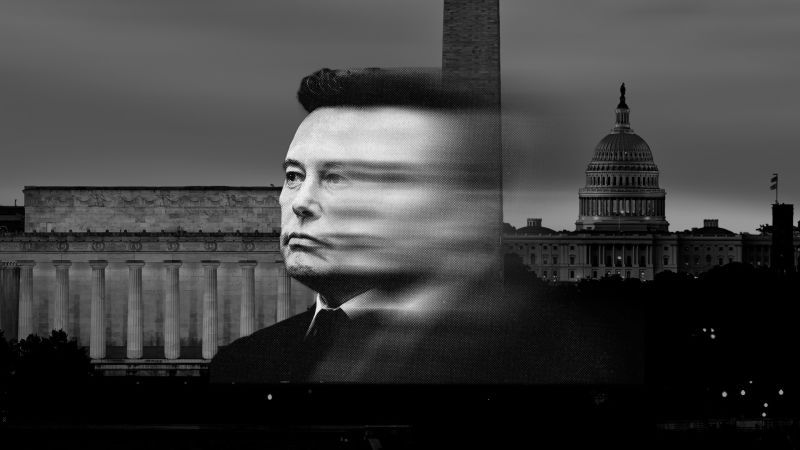The involvement of tech billionaire Elon Musk in President Donald Trump’s administration is reportedly diminishing, yet the initiative Musk championed, the Department of Government Efficiency (DOGE), seems positioned to maintain momentum following his exit. Within a brief span of fewer than four months, the DOGE initiative has integrated itself deeply into various governmental facets. This extensive reach encompasses staffing in critical positions across agencies, efforts to modernize outdated software systems, and a comprehensive attempt to consolidate sensitive personal data, aimed at expediting immigration enforcement and curbing fraud in governmental expenditures.
Many of the personnel currently affiliated with DOGE could remain in their positions for extended periods. While some are classified as “special government employees” — akin to Musk in terms of work limitations — others have secured roles through renewable contracts, with a few adopting titles typically reserved for permanent agency positions. The persistence of Musk’s associates within the federal framework has sparked observations of continued chaos and instability within government operations.
The early months of the Trump presidency have witnessed DOGE enact significant changes within the federal government. Reports state that over 121,000 federal employees faced layoffs or layoff threats during Trump’s first hundred days in office. Concurrently, thousands opted for buyout incentives, contributing to a sense of disarray and uncertainty as workers found themselves compelled to relocate or return to traditional offices to retain their jobs. While several federal programs and grants faced cuts, some were reinstated following legal challenges that emerged in the wake of these dramatic shifts.
Structurally, DOGE operates as a multifaceted entity, confronting challenges regarding the boundaries of its authority amidst ongoing legal and political disputes. The complexity of its mission has stirred discussions even within the Justice Department, with officials acknowledging the pervasive nature of the initiative but struggling to clearly articulate its defined scope. The forthcoming absence of Musk raises questions about whether DOGE will still exert influence over agency operations, particularly if clashes with Cabinet members or political adversaries arise.
Although Musk served as a magnet for controversy, his removal from the equation may simplify the progression of DOGE’s initiatives. Some agency officials suggest that while Musk’s initial disruptive methodology had its moments of effectiveness, a turning point had arrived where the pursuit of action in a less publicized manner could yield more substantial results. Republican Representative Rich McCormick articulated a belief that DOGE’s operational essence would remain, albeit less spotlighted.
From its inception, DOGE has been a personal undertaking for Musk, whose meticulous involvement has seen him working in various executive spaces within the White House environment, from conference rooms to sleeping quarters. Musk’s focus on government inefficiencies ranged from carefully analyzed audits to impulsive observations drawn from social media channels. His approach mirrored the rapid, disruptive culture characteristic of Silicon Valley, resulting in various staffers assuming multiple roles across different agencies.
As Musk’s focus shifted back toward his ventures with Tesla, his impact on DOGE has prompted concerns about potential destabilization within federal operations. Despite his departure, DOGE aims to uphold its mission against waste and fraud, with White House officials underscoring the continuity of initiatives despite Musk’s reduced visibility. Supporters from Congress, particularly within the Republican Party, assert that the agency’s momentum is firmly established, crediting Musk’s early contributions with enabling the agency’s progress.
Amidst ongoing legal battles regarding workforce downsizing and organizational restructuring, tensions between DOGE personnel and traditional agency staff have escalated. Reports indicate that communication barriers have arisen, leading to a dynamic where DOGE staff frequently embark on initiatives independently, often informing their colleagues only post-factum. This has cultivated a sense of distrust within the workforce, particularly as the implications of DOGE’s approaches to efficiency become evident.
As DOGE’s influence proliferates across federal agencies, concerns loom about its methodologies and their long-term ramifications. Reports detailing personnel embedded within pivotal programs and agencies show a systematic shift in governmental oversight, raising alarm over workplace autonomy and the impact on civil service dynamics. This transformation could lead to more extensive variations in how social welfare programs, such as Social Security, operate in the future.
In conclusion, while Musk’s formal role within the Trump administration may be waning, the ideologies behind DOGE are expected to endure. The atmosphere fostered by DOGE will continue to shape governmental interactions and practices, irrespective of the visibility and presence of its founder. As the political landscape shifts, policymakers and officials alike will need to contend with the broader implications of a changing executive framework intertwined with Musk’s legacy in governmental efficiency.



